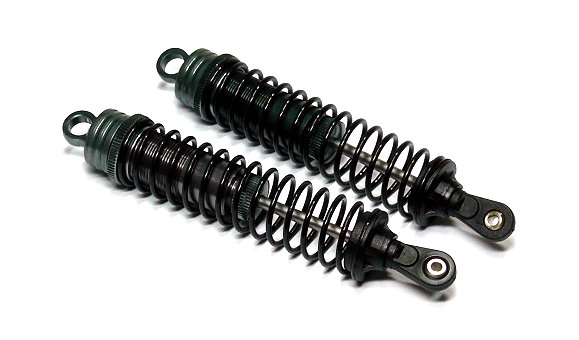Shock absorbers come in three types.
Friction - where the resistive force of the shock is constant across wide changes in velocity (F = k). Examples of these are old-school torsional suspension dampers, used on turn of the 19th century automobiles. They used strips of leather sandwiched between metal plates. The friction would resist motion, thus provide damping of a spring-mass system (suspension).
Hydraulic - where the resistive force of the shock increases proportional to increases in velocity. Examples of these are modern automobile hydraulic shocks. Essentially it’s a hydraulic ram, but the piston is ported to permit fluid to pass across it. If you double the rate in which you compress a particular hydraulics hock, you double the required force (F = k*v).
Gas - where the resistive force of the shock increases proportional to increases in velocity squared. Examples of these are modern automobile gas shocks. Essentially it’s still a hydraulic ram, however the working fluid is a compressed gas. If you double the rate in which you compress a particular gas shock, you more than double the required force (F = k*v^2).
There are also gas-hydraulic hybrid shocks, where the force is (F = k*v^c) where 1<c<2.
What does this mean in simple terms? When driving a car, you want a smooth ride. To obtain a smooth ride, you want the shocks to be “highly effective”during high-impulse events (bumps, potholes, etc). Otherwise you want the contribution of the shocks to be minimal for normal driving down the road. This is why friction-type shock absorbers are practically extinct, and the automotive and aerospace industry have moved almost exclusively towards gas and hydraulic shocks.
If I were building functional shock for a model airplane, I would construct a small hydraulic shock, and fill it with thick oil to minimize leaking past the seals. Drill the piston for a metering hole, to obtain the desired value of k (i.e. how hard and fast you must comress or expand the shock for a givenforce). Remember that very high rates of compression on hydraulic shocks will cause very high compressive forces. Remember also that when the oil is cold, the k value increases beacuse the oil is thicker.










